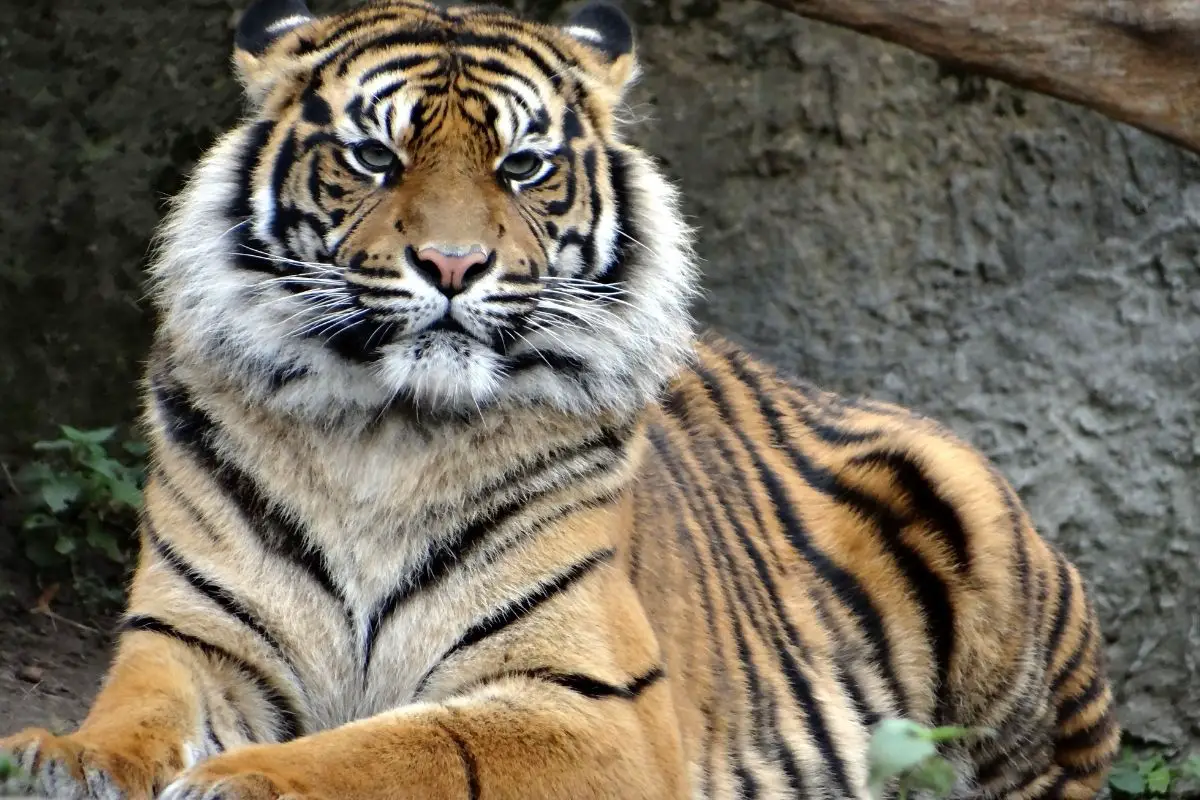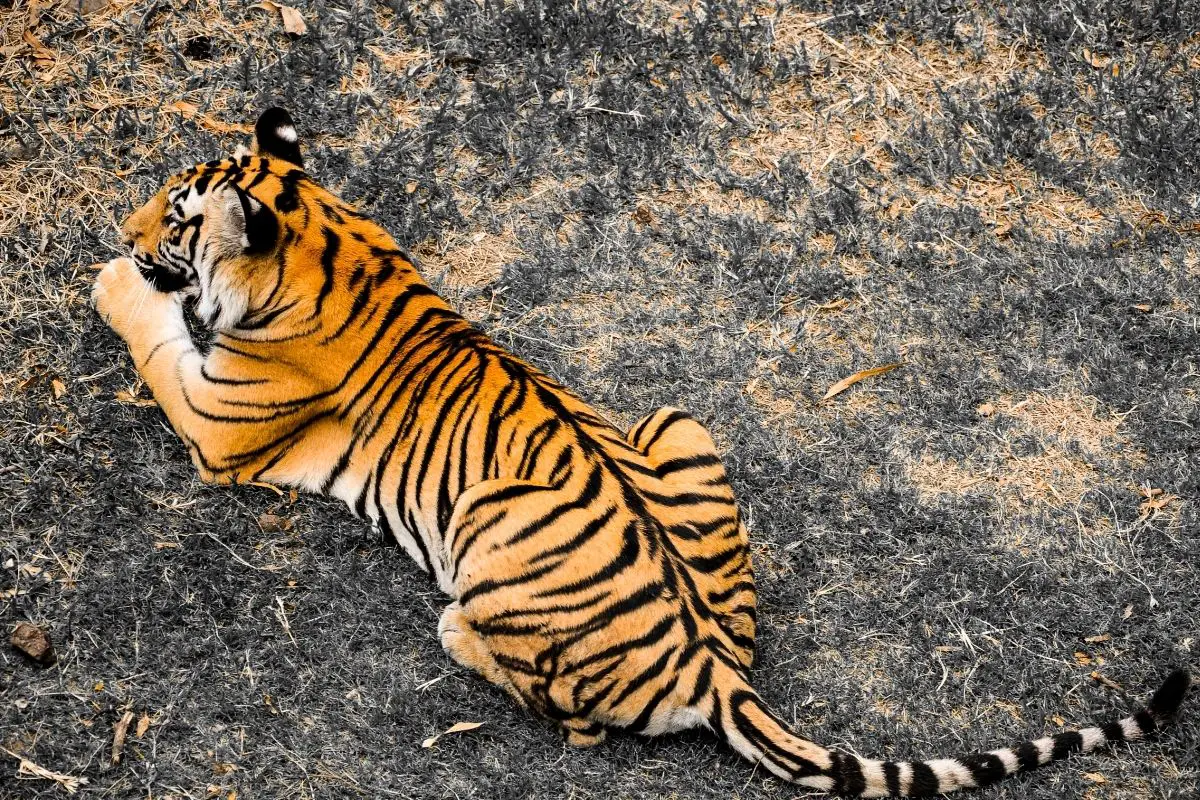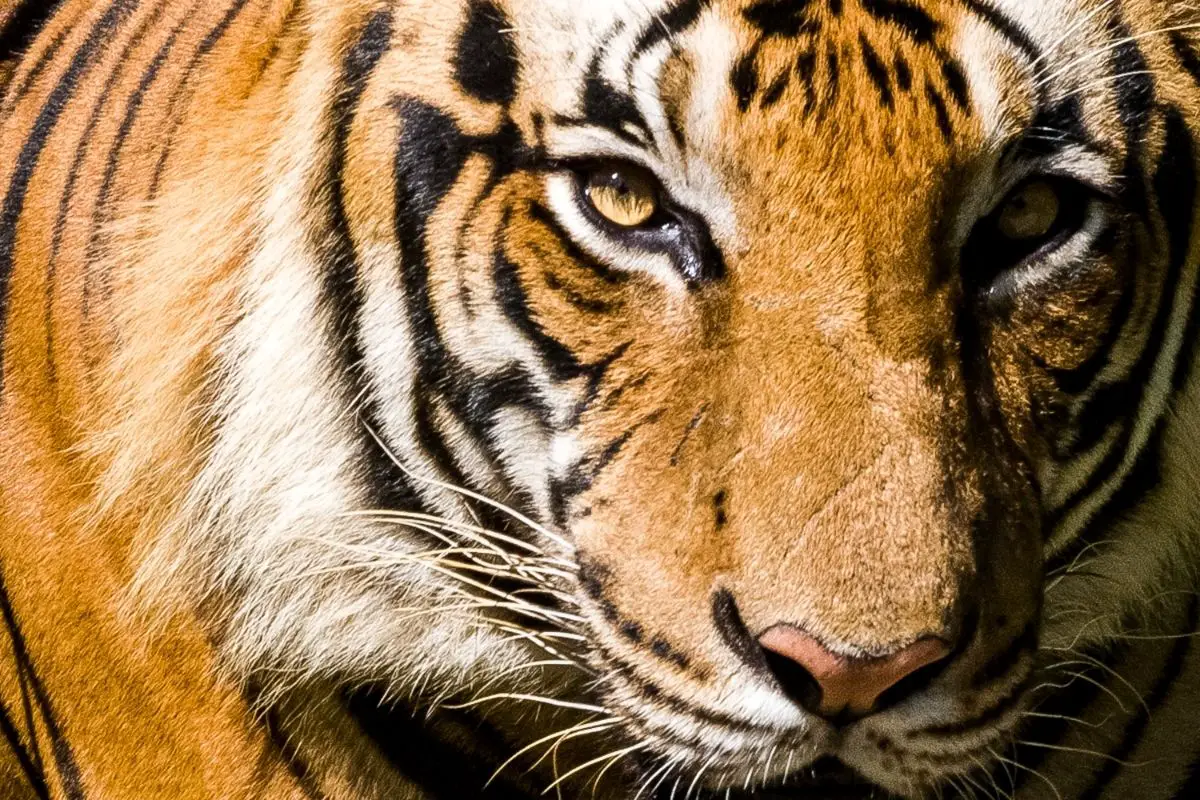South China tigers are incredible animals.
They relate more to the historic era of tigers rather than the more current tiger type, having evolved via an ancient lineage of tigers.
This has been proved through extensive genetic research and observation.
Their stripes, like many tigers, are similar to that of a human fingerprint. No two tigers have the exact same stripe pattern making them very unique.
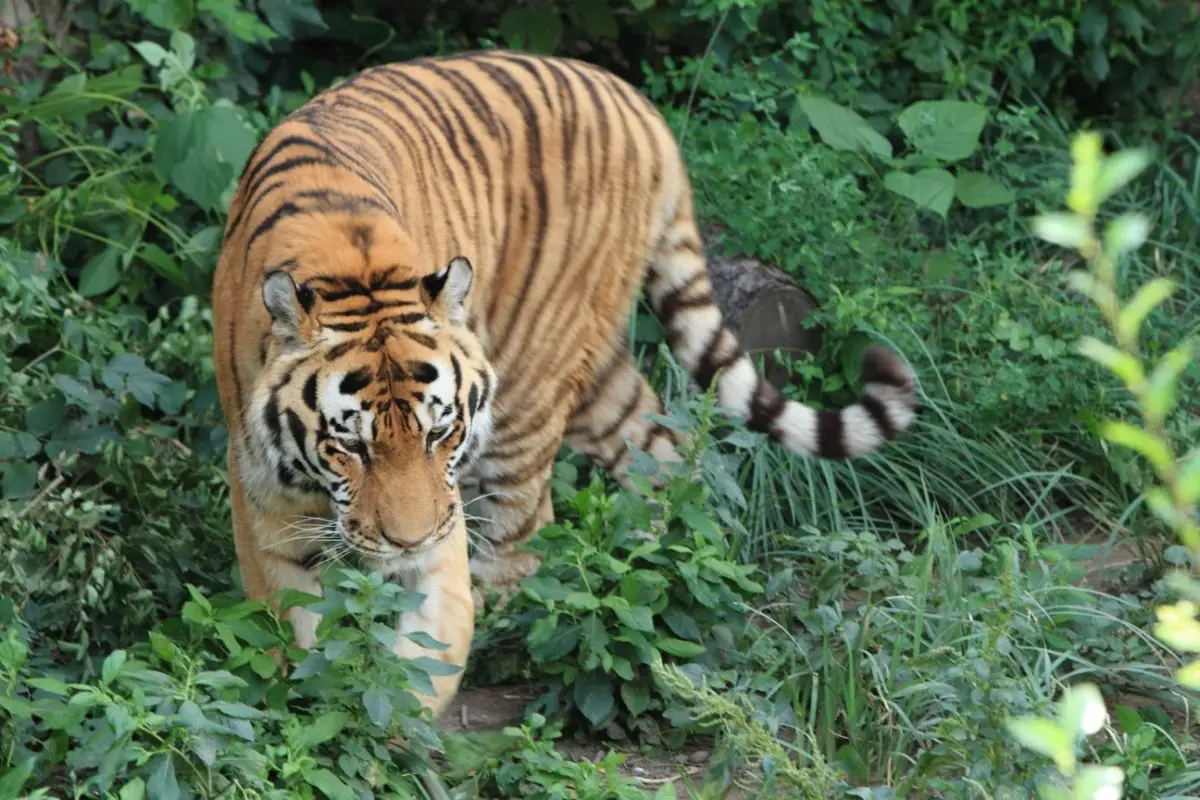
The South China tiger is also one of the smallest tigers, though not the smallest – this belongs to the Sumatran tiger.
It also has a more yellow colored fur, which is much shorter than that of the bigger Siberian or Bengal tiger.
Their eyes are set closer, yet their skulls are large and intimidating – much like their jaw and teeth when they growl or bite.
Due to their decline over the years, they have become confined in a small area of China.
However, they haven’t been seen in the wild since the 1990’s. With all this in mind, let’s take a look at South China tigers.
Oh, and just something for those interested in facts, the basketball team, Guangdong Southern Tigers, are named after this wonderful mammal. Go team go!
Are There Tigers In South China?
The tigers in south China have lived relatively isolated, meaning that their chance of meeting other types of tigers has been extremely uncommon.
There was a time as recent as the 19th century that the South China tiger lived in a massive territory throughout central China.
This went as far as Hong Kong, but human development has destroyed most of their habitat.
In doing so, they have made the habitats of the tigers much smaller and this has had a significant impact on the South China tigers population.
Due to the tigers living in such a solitary state, there is also no chance of them interbreeding with other lions.
Again, this has also had an impact on the tigers as a whole. So, are there tigers in south China? Perhaps, but it is currently unknown to what extent.
They have been labeled as ‘critically endangered’ since around the year 1996. The 90s was also the last time they were apparently last seen.
In 1987, the population of wild South China tigers was around 40 to 40. This meant that the possibility of them becoming extinct was sooner rather than later.
In 1990, there was a survey done around the areas of Fujian, Guangdong, Sichuan, Jiangxi, and Hunan, paying special attention to reserves along the mountains.
They observed any evidence that looked like it came from tigers such as scrapings, tracks, and speaking to locals who said they had seen them.
Unfortunately, there were no official sightings, and this has led many to believe that they have now become extinct in the wild and amongst their natural habitat.
How Many South China Tigers Are Left?
Despite the possibility that South China tigers are fully extinct, there are some left. However, these are in captivity, but at least they still exist.
Any sightings that have been observed have never been proved or officially confirmed.
Even if there are some South China tigers living in the wild currently, though difficult to believe, there would be too few of them to begin bringing the South China tiger back into population.
There are currently around 3,500 tigers left in the whole of the world, making them an endangered species.
There are close to 70 South China tigers in captivity, whether that is zoos or national safari parks.
Most of these are also in China, with every single one being born in captivity rather than from the wild.
Is The South China Tiger Extinct?
The South China tiger isn’t fully extinct, despite their possibly being none left in the wild.
This is due to the fact that there are South China tigers in captivity like zoos, safari parks and breeding centers – mainly in China.
Whilst it is sad that there are believed to be none left in the wild – there hasn’t been a confirmed sighting of them since before the 1990s – at least they do still exist.
This doesn’t mean that they are not still endangered or close to extinction. There are so few of them that their breed is becoming close to being wiped out completely.
What Will Happen If The South China Tiger Goes Extinct?
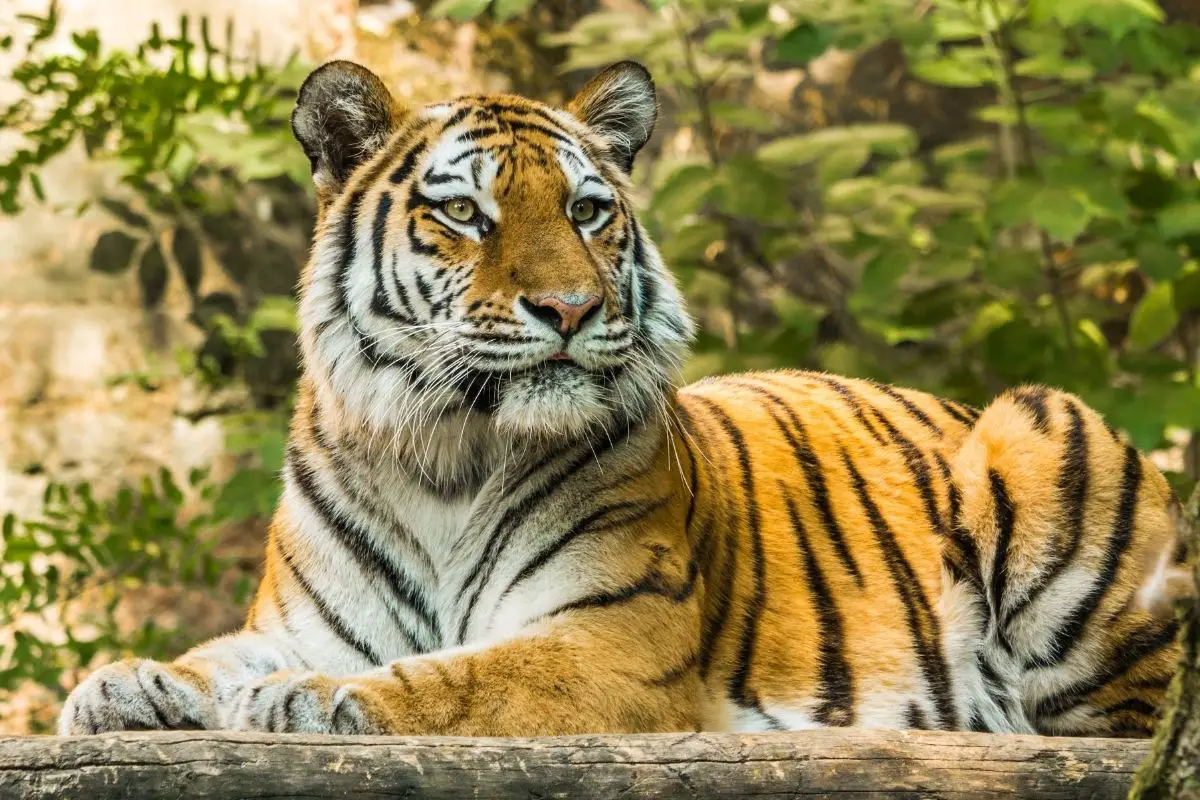
The South China tiger holds a lot of importance to China as a symbol of honor. It has been used as a cultural icon whether in literature, art, or philosophy.
The symbol itself represents their conservation ethic, to promote the importance of wilderness among a growing human population.
Not only that, if the South China tiger were to become extinct, then it joins a growing number of tigers who cease to exist.
In fact, the tigers in Asia play a major part in keeping their ecosystem healthy.
This helps to bring both people and nature fresh, clean water, as well as food and look after their overall health.
This is because tiger territories like forests help to protect watersheds that are major to cities.
To put it simply, tigers maintain the forests that then help the earth and those who live in it.
A good example of how animals help the environment is the Dodo.
When they became extinct, a species of Acacia tree completely stopped regenerating. Isn’t it scary how this can happen?
How Can We Save South China Tigers?
Tigers are declining due to the impact of humans and other environmental forms. The South China tiger lost its original habitat due to a number of reasons.
Some of these included:
Agriculture
Agriculture plays a big part in why tigers, and other animals like lions, become extinct.
Due to a growing demand for things like palm oil, the tigers’ habitats are lost because of agriculture and logging.
Tigers have wide and large territories. Once these are taken over and shortened, things change for the tiger.
Not only is their habitat destroyed, but they have a limited amount of prey, etc.
Over time, this changes their genetics, and how they evolve, and not always for the best.
Food Sources
As stated above, once their habitat is destroyed, and their territory becomes smaller, it means that there will be a time when there is a lack of food.
They usually live in a large territory that will have plenty of wildlife and prey for them to hunt.
Once they lose the space, there will be less prey to hunt. If they cannot hunt, this means they starve or find other means to get the food.
Whatever decision they take (from hunting bigger animals that they do not usually see as prey, entering human territory, or starving), it will most likely end up with the tiger dying.
In some areas, domesticated animals have moved on to a lion’s territory as humans take over land for their own needs.
If a tiger becomes very hungry, it will become desperate. In doing so, it may venture out to other areas it usually does not, especially if there are animals.
Livestock kept for farming purposes are commonly seeked out by tigers (and lions) who are very hungry but have no prey to feed on.
In doing so, they usually get shot by the owner. If the owner knows that this happens, then they may leave out poison to kill the tiger.
Back in the 1950s, there was an anti-pest campaign set up by the government due to tigers attacking humans and livestock.
This saw them kill many of the South China tigers. They went from a healthy 4,000 population to around 30 during the later end of the 20th century.
Poaching And Hunting
Lastly, hunting and poaching is a big problem when it comes to wild tigers.
This is because many people spend months camping in their territory and then killing them for trading their food and other tiger body parts.
Unfortunately, this illegal act is one of the reasons that the South China tiger declined so rapidly, along with the anti-pest movement.
By the 1970s when they realized that their numbers had declined heavily, they classified the South China tiger as a protected species.
Whilst this is a good move by the government, at this point it was just too late to achieve anything.
So How Can The South China Tiger Be Saved?
There are currently two organizations, the World Wildlife Fund and Save China’s Tigers, who have partnered up to try and save the South China tiger from becoming completely extinct.
They are currently breeding the tiger in captivity and then releasing them into specially made reserves that are scattered throughout China.
However, it is not known yet whether this will make a difference.
Final Thoughts On South China Tigers
South China tigers are incredible mammals, though they are critically endangered.
They haven’t been seen in the wild since before the 1990s, and are now living in captivity only.
If you enjoyed this article, take a look at the rest of our website on big cats!
- Sink Your Teeth Into This: Analyzing the Powerful Lion Bite Force - September 8, 2023
- Siberian Tigers: Everything You Need To Know - September 4, 2023
- Do Lions Eat Humans? Understanding Lion Aggression and Risks - September 4, 2023

